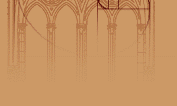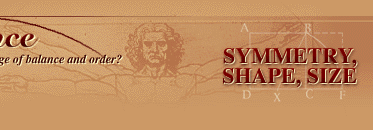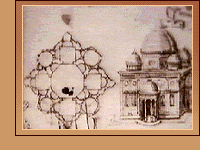 
The Art of Renaissance Fibonacci Numbers History of A Selection of |
 Architecture In constructing churches, Renaissance architects no longer used the shape of a cross as a basis for their structures. Instead, they based them on the circle. Believing that ancient mathematicians equated circles with geometric perfection, architects used the circle to represent the perfection of God.
In constructing their homes, wealthy people of the Renaissance often adopted a Roman style, building the four sides of their homes around a courtyard. Simple, symmetrical decorations--imitations of classical ones--were applied to the façades of buildings, and some structures also featured columns reminiscent of ancient temples. Painting Paintings of the Renaissance demonstrate the application of humanistic ideals learned from the ancients. In works from the Middle Ages, saints and Biblical figures are arranged in unnatural, geometric groups, and backgrounds are nothing more than washes of gold. The Renaissance painter depicted the human figure as realistically as possible, often with backgrounds of the natural world. Science had taught the artist how to show linear perspective--that is, how to represent objects in relative sizes so that smaller objects appear to be farther from the viewer than larger objects. Careful use of light and shadow (called "chiaroscuro") made figures appear full and real. Renaissance painters not only portrayed objects with more realism than earlier artists did, they often filled their canvases with more objects, all carefully and accurately depicted. Music Since the Middle Ages, music theorists had been studying proportions, a subject that the Greek mathematician Pythagoras had written about when discussing music. The theorists explained how to make different pitches (sounds) on stringed instruments by lengthening or shortening the strings by different proportions. For example, if a musician were to divide a string in half (the proportion of 2:1), he would create a new tone that is an octave above the original tone. Renaissance musicians carried on this idea in their own music. Renaissance composers also incorporated the classics into their craft. By studying Greek drama, they discovered the art of making their music reflect the lyrics in their songs--making music sound happy for words of joy and sorrowful for words of grief. When they learned that ancient Greek drama (which featured music) brought the audience to tears with its sad music, Renaissance composers tried to re-create that theatrical experience. They didn't succeed, but their efforts resulted in the birth of opera.
| |||||
